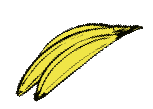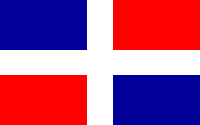Merengue is a music style from the Dominican Republic, a Caribean nation which shares an island with Haiti.
It evolved out of ‘perico rapiao’ which mean plucked or stripped parrot. This name refers to
 the wild country parties at which, in the absence of chicken, pigeon, or other fowl, the main dish was parrot. The
frenetic dance music that accompanied the parties was created by local groups who took the name of the principal
plate. In the 1930s, the urban population brought it into the dance halls, in a modified form. This quickly took
the nation by storm, and became the dance of the Dominican Republic.
the wild country parties at which, in the absence of chicken, pigeon, or other fowl, the main dish was parrot. The
frenetic dance music that accompanied the parties was created by local groups who took the name of the principal
plate. In the 1930s, the urban population brought it into the dance halls, in a modified form. This quickly took
the nation by storm, and became the dance of the Dominican Republic.
Like all Caribean music, Merengue is deeply rooted in both African and Spanish music. Merengue traditionally begins with and
 introduction, or paseo, followed by one or two vocalists playing with the accompanying instruments in which
the theme of the piece is developed. This is known as the jaleo. This is followed by the merengue, a
"call and response" section where the soloist sings a short phrase and the chorus responds.
introduction, or paseo, followed by one or two vocalists playing with the accompanying instruments in which
the theme of the piece is developed. This is known as the jaleo. This is followed by the merengue, a
"call and response" section where the soloist sings a short phrase and the chorus responds.
The traditional instruments of the merengue are the accordian, guitar, tambora, guira, and marimba.
The accordian and the guitar are a part of the Spanish influence, while the tambora, guira, and the marimba are the
results of the African influences.
Tambora-A short two-headed cylindrical drum played with a stick on the right head and a palm on the left head.
The heads are made out of goat skin.
Marimba- A wooden box with between four and eight metal tongs fixed across an opening in the front. The are plucked with the thumbs.
Guira-A metal scraper played with metal wires attached to the scraper.

